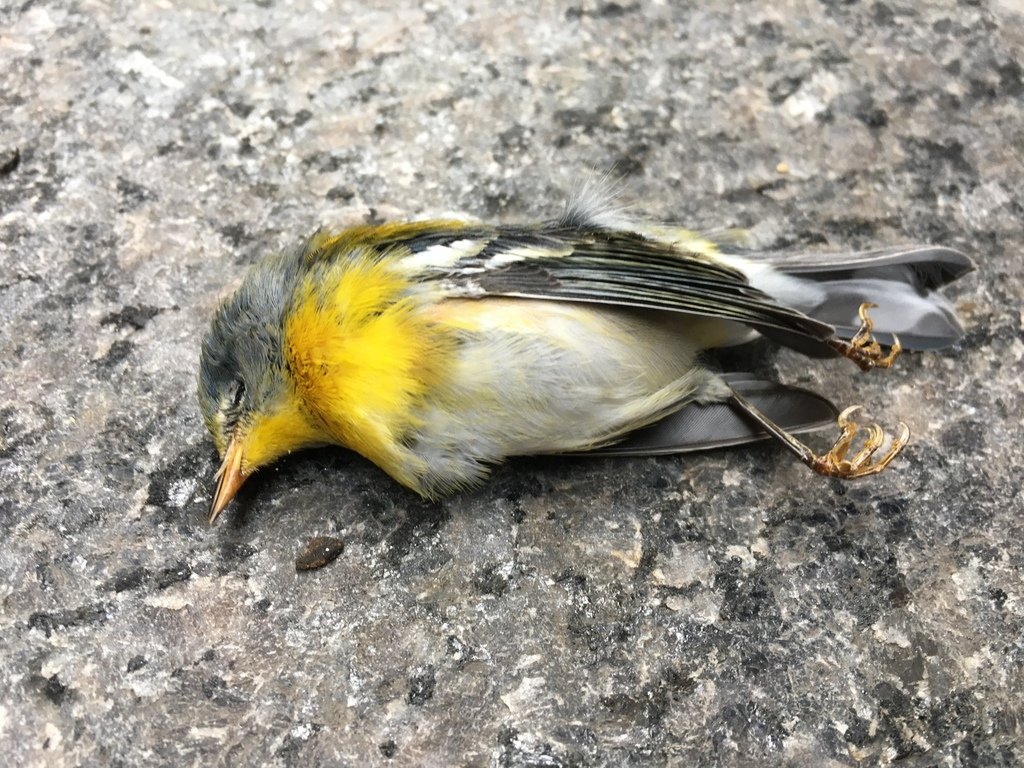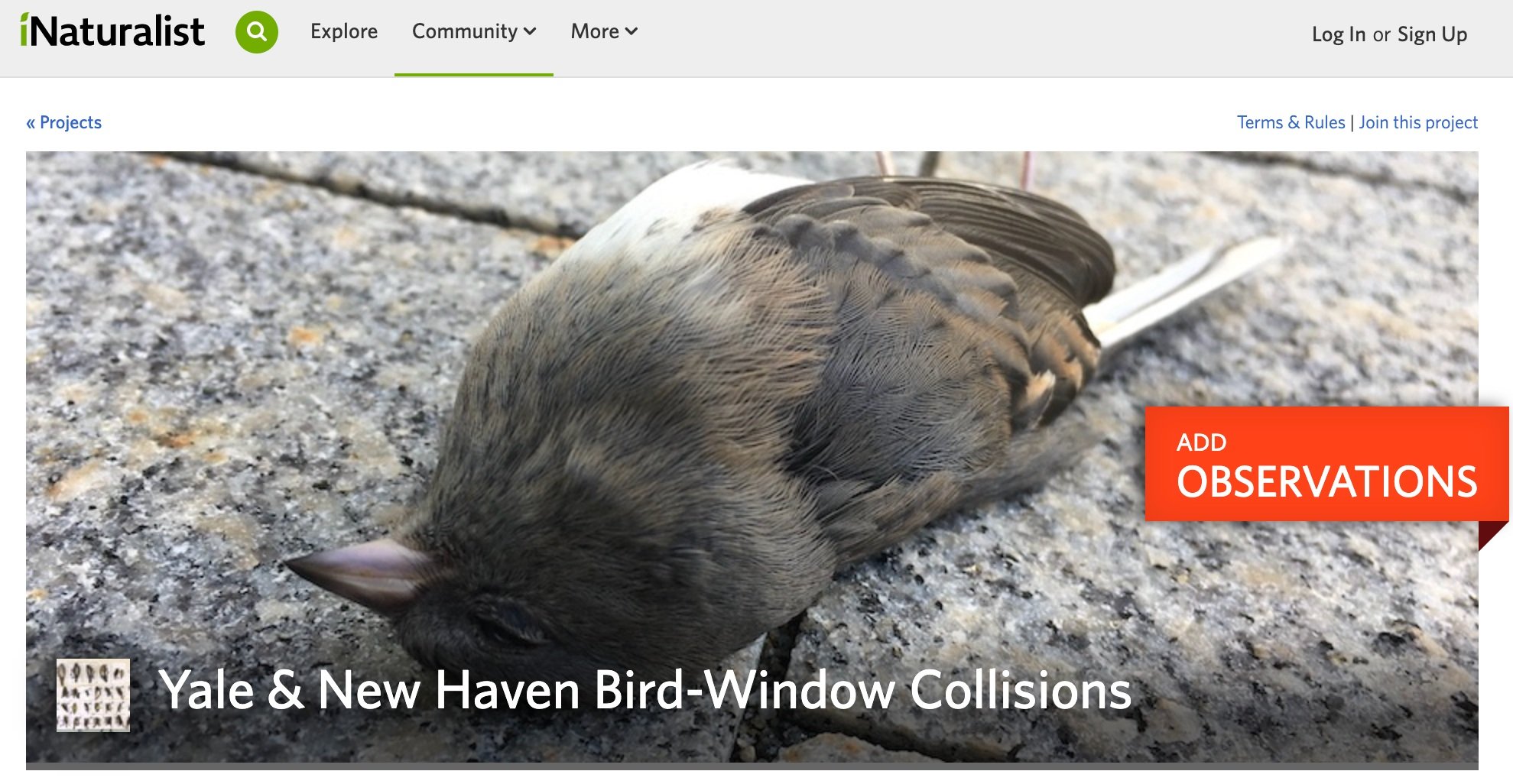
Report a Bird Collision
If you encounter a dead or stunned bird due to window strike on Yale’s campus or in the greater New Haven area, please document it via our “Yale & New Haven Bird-Window Collisions” project on iNaturalist. iNaturalist is a free citizen science app that can be accessed via a smartphone or web browser. In addition to contributing to scientific research, these data is very helpful for identifying buildings and facades that are killing birds frequently and for advocating for mitigation action to prevent future bird deaths.
How to Report a Bird Collision on iNaturalist:
Photograph the bird from several angles (to help with species identification) and photograph the location (to help with facade identification).
Log in to the citizen science app iNaturalist from your computer or smart phone.
Join our iNaturalist project “Yale & New Haven Bird-Window Collisions” by clicking the “join project” button in the upper right hand corner of the project page.
Upload the photos, tag the location, and add the bird directly to our project: “Yale & New Haven Bird-Window Collisions,” where experts can help identify or confirm the species. Please include the location where the bird was found — i.e. “Yale SOM Building, 165 Whitney Avenue, New Haven, CT, west facade of building, about five feet from the transparent glass doors at the front entrance.” Please also note if the bird was removed, collected, or taken to a wildlife rehabilitation center.
How to Collect a Dead Bird for the Yale Peabody Museum:
In addition to reporting the collision, please consider collecting the bird and donating it to the Yale Peabody Museum of Natural History ornithological collection. The museum holds the required federal and state permits authorizing it to salvage birds found dead. Preserved museum specimens serve as verifiable and permanent records, are a source of genetic material, and can used for research and education. Please follow these steps when collecting a dead bird:
Place the carcass in an airtight plastic bag (Ziploc-type). Wear disposable plastic gloves or use a tool to avoid touching the bird with bare hands.
Record the date, a detailed description of the place where the bird was found (street address, building façade), your name, and your contact information on a slip of paper. Place the slip of paper in the bag with the carcass.
Store the bagged specimen in a freezer until you arrange a drop-off at the Peabody Museum. Email Dr. Kristof Zyskowski to arrange the specimen transfer.
These birds were killed by window collisions in New Haven and salvaged by community members. Rather than simply being discarded, these birds are now part now part of the Yale Peabody Museum’s ornithological collection for research and education. Photo by Seth Inman.

